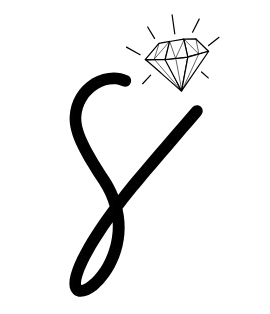It started with a casual conversation at a family dinner. My cousin, who was recently engaged, held up her diamond ring and laughed, “Did you know some diamonds glow in the dark?” The table erupted in debate. Glowing diamonds? Like glow sticks? That evening, curiosity got the best of me, and I dove headfirst into the luminous world of diamond fluorescence.
What I uncovered surprised me—and it might surprise you too.
What Is Diamond Fluorescence?
Fluorescence in diamonds refers to the visible light some diamonds emit when exposed to ultraviolet (UV) light. It’s not a myth, marketing gimmick, or sci-fi concept—this glow is real and scientifically studied.
According to the Gemological Institute of America (GIA), about 25–35% of diamonds exhibit some level of fluorescence, usually blue but occasionally yellow, white, or even green. The GIA rates fluorescence intensity from “None” to “Very Strong.”
Why Do Some Diamonds Glow?
The glow comes from trace elements—mainly nitrogen—within the diamond’s crystal structure. When UV light hits these elements, electrons get briefly excited and release energy as visible light. It’s similar to how blacklight posters glow under UV lamps.
Real-World Testing: My Own UV Experiment
To truly understand this phenomenon, I borrowed a handheld UV light and examined three diamonds:
- A certified diamond pendant (0.5 carat, G colour, VS1 clarity)
- A vintage ring passed down from my grandmother
- A lab-grown diamond sample from a jeweller friend
The result? Only the vintage ring exhibited a clear, bluish glow. The others stayed dark. This hands-on test showed me that fluorescence is less common than people think—but it’s definitely noticeable when present.
Does Fluorescence Affect a Diamond’s Appearance?
This is where things get nuanced. A mild to medium fluorescence is usually invisible under regular lighting. But in rare cases, strong fluorescence can make diamonds appear hazy or oily, especially in high-clarity stones like D or E colour.
However, a slight fluorescence can actually improve the appearance of diamonds with lower colour grades (like J or K), making them appear whiter and brighter under daylight.
Expert Insight: According to Troy Vinson, a GIA-certified gemmologist based in London:
“Fluorescence is often misunderstood. It’s not inherently good or bad. In some cases, it can enhance a stone’s beauty, especially in warmer-coloured diamonds.”
Should You Worry About It When Buying a Diamond?
Only if you’re buying a top-tier colourless diamond (D-F colour) and want to ensure a crystal-clear look under all lighting conditions. In those rare instances, strong fluorescence could affect visual purity.
That said, diamonds with noticeable fluorescence are often priced 10–15% lower, making them a great value choice if the visual quality holds up in natural light. Always view the diamond in both daylight and UV light if fluorescence is present.
Do Lab-Grown Diamonds Glow Under UV Light?
Yes, they can—but differently.
Lab-grown diamonds often display a distinct phosphorescence, especially those created via the High Pressure High Temperature (HPHT) method. This means they can continue to glow for a few seconds after the UV light source is removed.
That’s one way experts distinguish between natural and lab-grown diamonds.
The Science Behind the Glow
A 2020 study by researchers at the University of Padua found that:
- 98% of fluorescence in natural diamonds is blue, due to nitrogen impurities.
- Some fancy-colour diamonds, particularly yellow or green ones, can show different hues like orange or white under UV light.
Their study suggests that fluorescence may also help geologists determine a diamond’s origin and formation history.
Is Fluorescence a Dealbreaker or a Hidden Gem?
In many cases, it’s neither.
It’s simply a natural trait—like freckles on skin or grain in wood. Some collectors even seek out strong fluorescence as a unique characteristic. Jewellery forums are full of buyers praising their glowy gems for their unusual charm.
In fact, the GIA has repeatedly stated that “fluorescence rarely affects a diamond’s structural integrity or long-term value.”
Frequently Asked Questions
Do all diamonds glow under UV light?
No. Only about 25–35% of diamonds show some fluorescence, and the intensity varies widely.
Is diamond fluorescence bad?
Not inherently. Mild fluorescence is often invisible, and moderate fluorescence can even improve a diamond’s appearance in lower colour grades.
How can I check if my diamond glows?
Use a handheld UV light (blacklight) in a dark room. Blue fluorescence is the most common.
Are glowing diamonds fake?
No. In fact, most synthetic diamonds glow differently than natural ones. It’s not a sign of being fake.
Can I use fluorescence to identify diamonds?
It helps gemmologists—but it’s not foolproof. Always pair it with other tests.
Final Thoughts: What I’d Tell You If We Were Ring Shopping Together
If you’re in the market for a diamond and stumble upon one that glows—don’t be alarmed. Ask the jeweller to show you the stone under UV and natural light. See how it looks, not just on paper but in your hand. If it speaks to you, trust your eye.
Sometimes, a soft blue glow is a hidden bonus—a gentle flicker that makes your diamond your diamond.
Over to You:
Have you ever seen a glowing diamond in person? Was it enchanting or off-putting? Share your story in the comments—or shine a UV light on your jewellery and let me know what you discover!
Read More: Best Stones For Engagement Rings




